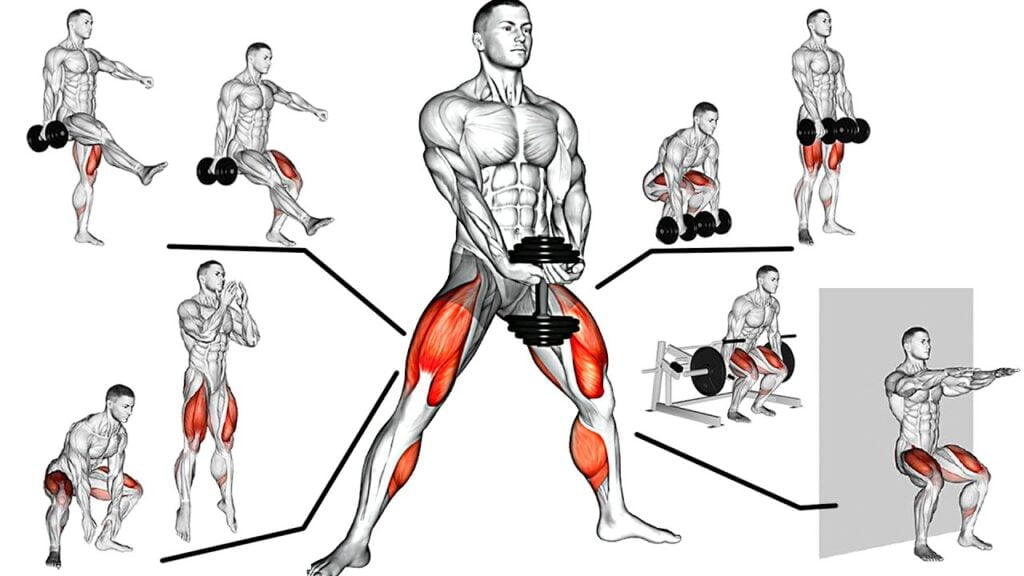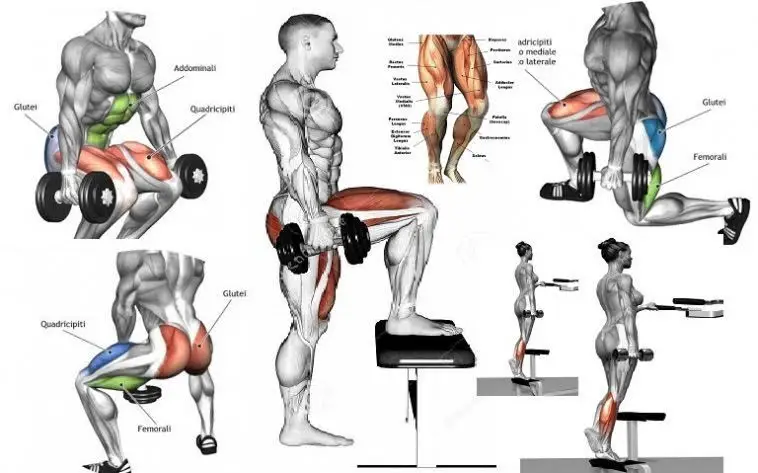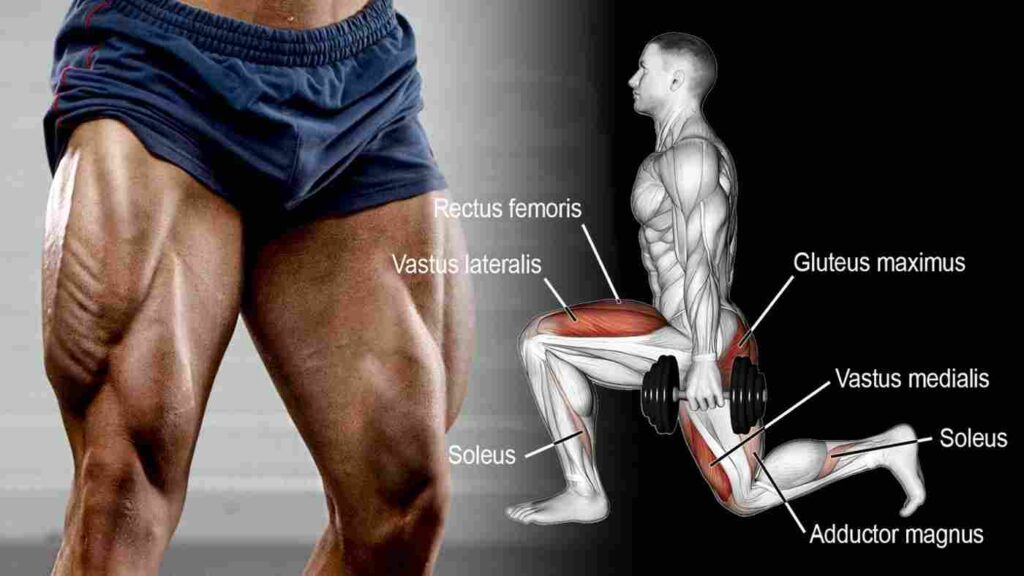Introduction
In the pursuit of a strong and resilient physique, few endeavors are as rewarding as mastering the art of compound leg exercises. These dynamic movements are pillars of effective strength training, offering a gateway to enhanced muscle development, functional fitness, and overall vitality. Whether you’re an experienced gym enthusiast or a novice eager to step into the world of fitness, the realm of compound leg exercises holds a promise of transformative results.
SHOP FOR THE ADJUSTABLE DUMBBELL SET ON AMAZON
This comprehensive guide delves into the realm of compound leg exercises, unraveling the intricate tapestry of their benefits, execution techniques, and their profound impact on your fitness journey. As we embark on this exploration, we’ll unveil the science behind these exercises, decode their significance, and equip you with the knowledge to embark on a path toward leg strength and resilience like never before.
Understanding Compound Leg Exercises
Compound exercises are exercises that work for multiple muscle groups at the same time. They are a great way to build muscle and strength, and they can also help to improve your overall fitness. Some examples of compound leg exercises include:
- Barbell squats
- Deadlifts
- Romanian deadlifts
- Lunges
- Leg presses
- Glute bridges
Importance of compound leg exercises
Compound leg exercises are important for a number of reasons. First, they help to build muscle and strength. This is important for overall health and fitness, and it can also help to improve your performance in sports and other activities. Second, compound leg exercises help to improve your coordination and balance. This is because they require you to use multiple muscle groups at the same time, which can help to improve your overall body awareness. Third, compound leg exercises can help to burn calories and fat. This is because they are a great way to get your heart rate up and burn energy.
Benefits of incorporating them into your routine
There are many benefits to incorporating compound leg exercises into your routine. Some of the most important benefits include:
- Increased muscle mass and strength
- Improved coordination and balance
- Increased calorie burn and fat loss
- Reduced risk of injury
- Improved overall health and fitness
If you are looking to improve your leg strength and size, compound leg exercises are a great place to start. They are also a great way to improve your overall fitness and health.
SHOP FOR THE RESISTANCE BAND ON AMAZON
Here are some additional benefits of incorporating compound leg exercises into your routine:
- They can help to improve your posture.
- They can help to reduce pain in the lower back and knees.
- They can help to improve your athletic performance.
- They can help to boost your metabolism.
If you are new to compound leg exercises, it is important to start slowly and gradually increase the weight as you get stronger. You should also make sure to warm up properly before each workout and cool down afterward.
Top Compound Leg Exercises
When it comes to sculpting powerful and well-defined legs, incorporating the right exercises into your routine can make all the difference. Compound leg exercises, in particular, are the holy grail of leg workouts. These exercises engage multiple muscle groups at once, providing not only efficient time utilization but also fostering significant strength and muscle gains. Let’s delve into the top compound leg exercises that can transform your leg game.
1. Squat
The squat is the ultimate compound leg exercise, targeting your quads, hamstrings, and glutes. Stand with feet shoulder-width apart, lower your hips while keeping your back straight, and push through your heels to return to the starting position.
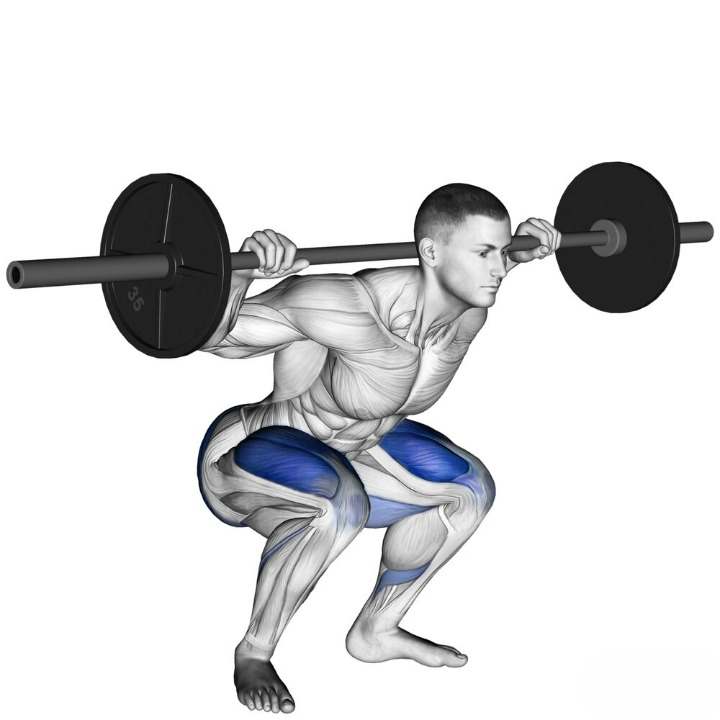
How to Perform: Place a barbell across your upper back, gripping it with your hands slightly wider than shoulder-width. Lower your hips until your thighs are parallel to the ground, then rise back up.
Sets & Reps: Start with 3-4 sets of 8-10 reps. Adjust weight as needed.
Tips: Maintain a neutral spine throughout the movement. Push your knees out as you squat down to prevent them from collapsing inward.
2. Front Squat
The front squat emphasizes the quads and requires strong core engagement. Hold the barbell in front of your shoulders with an overhand grip, crossing your arms.
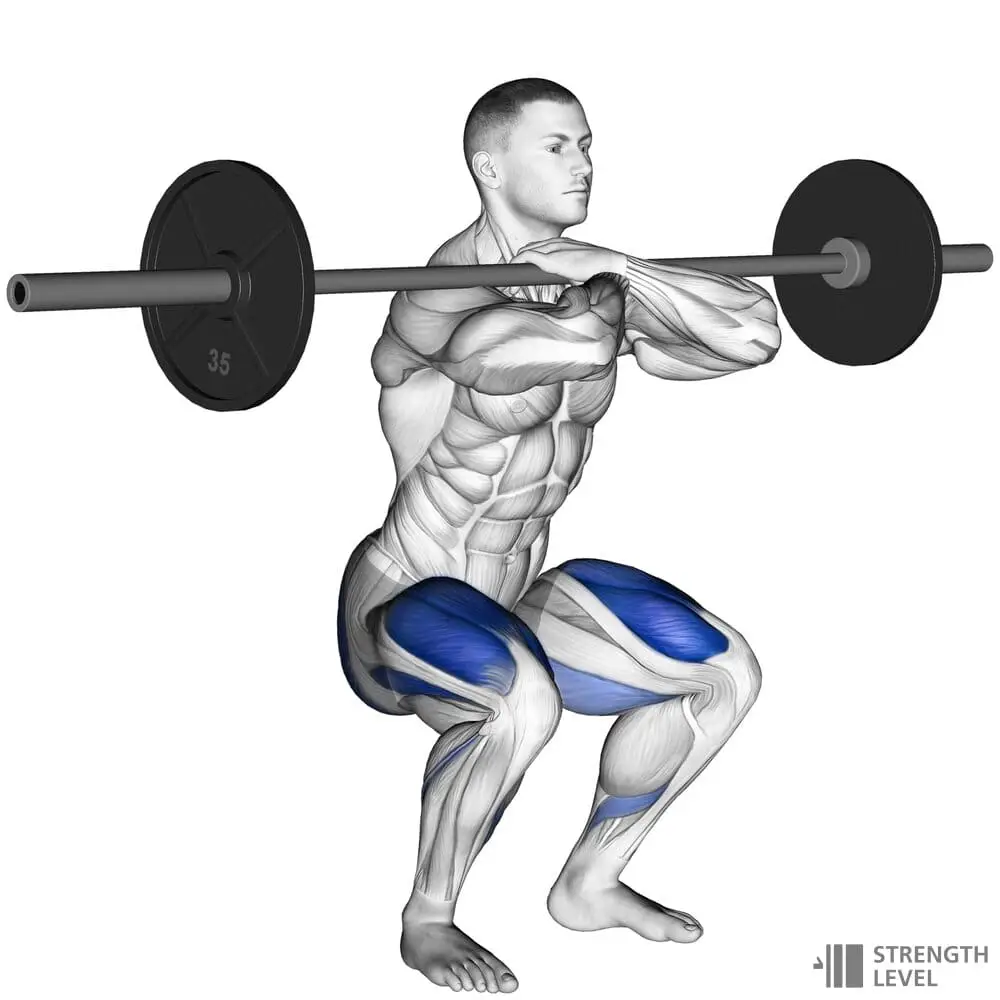
How to Perform: Keep your elbows up, descend by bending your knees, and lower your hips. Maintain an upright torso and push through your heels to stand back up.
Sets & Reps: Aim for 3-4 sets of 8-10 reps.
Tips: Keep your chest up and core tight. Practice wrist flexibility to comfortably hold the barbell.
3. Bulgarian Split Squat
This unilateral exercise enhances balance and works the quads and glutes. Place one foot behind you on a bench and lower your back knee toward the ground.

How to Perform: Lower your back knee toward the ground while keeping your front knee above your ankle. Push through the front heel to return to the starting position.
Sets & Reps: Perform 3 sets of 10 reps per leg.
Tips: Maintain an upright posture and focus on stability. Use a comfortable bench height.
4. Goblet Squat
The goblet squat is a user-friendly squat variation. Hold a dumbbell or kettlebell close to your chest as you squat down.
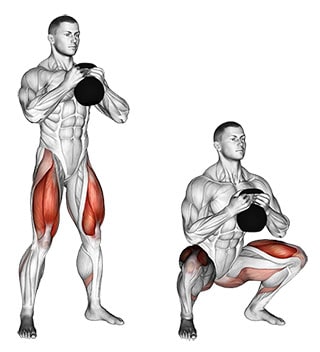
How to Perform: Hold the weight close to your chest, squat down, and push through your heels to return up.
Sets & Reps: Start with 3 sets of 12 reps.
Tips: Use this exercise to perfect your squat form. Keep your elbows pointing down between your knees.
5. Straight Leg Deadlift
Target your hamstrings and lower back with the straight-leg deadlift. Hold a barbell with an overhand grip, and keep your legs straight as you hinge at your hips.

How to Perform: Lower the barbell toward the ground while maintaining a straight back. Engage your hamstrings and return to an upright position.
Sets & Reps: Begin with 3 sets of 10 reps.
Tips: Avoid rounding your back during the movement. Focus on a slow and controlled descent.
6. Glute Ham Raise
This exercise isolates your hamstrings and glutes. Secure your feet and lower body, then lift your upper body by contracting your hamstrings.
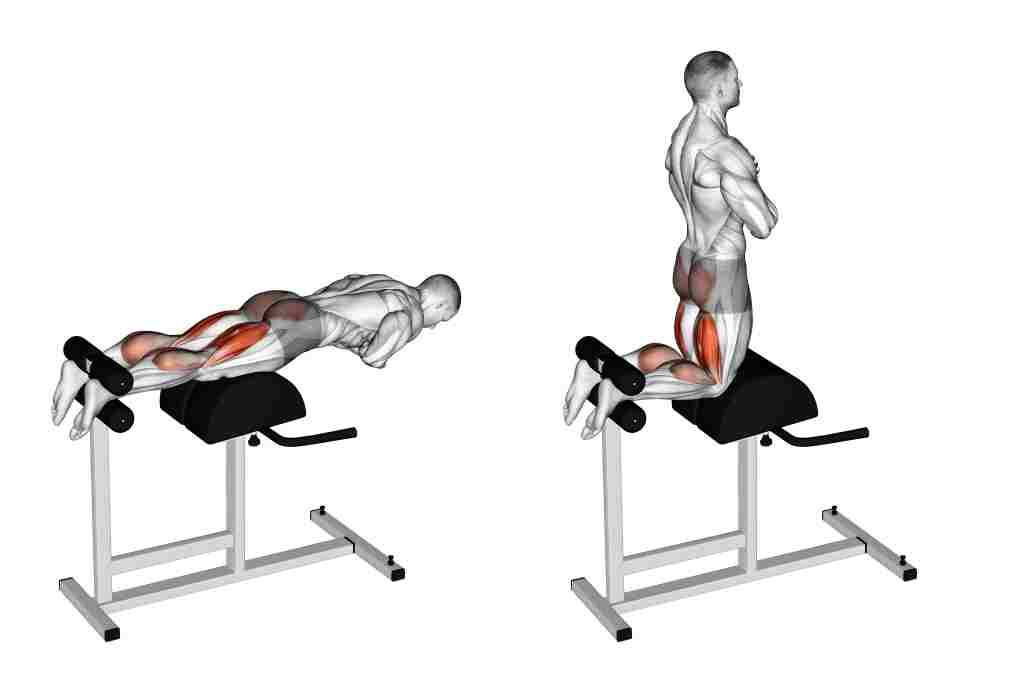
How to Perform: Lower your upper body while keeping your core engaged, then lift it back up using your hamstrings.
Sets & Reps: Aim for 3 sets of 8-10 reps.
Tips: If you’re new to this exercise, use a resistance band to assist your movement.
7. Romanian Deadlift
The Romanian deadlift targets your hamstrings and lower back. Hold a barbell with an overhand grip and slightly bent knees.
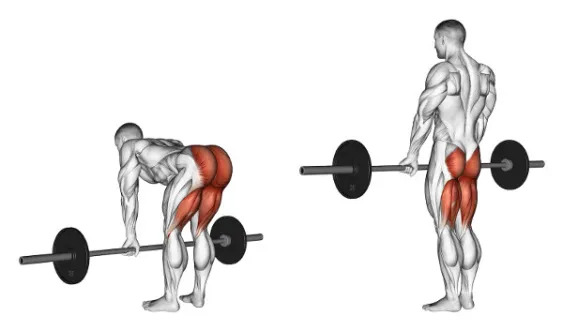
How to Perform: Hinge at your hips while keeping your back straight, lowering the barbell until you feel a stretch in your hamstrings. Return to the starting position by extending your hips.
Sets & Reps: Perform 3-4 sets of 8-10 reps.
Tips: Keep the barbell close to your body throughout the movement. Focus on maintaining a neutral spine.
8. Sumo Squat
The sumo squat emphasizes the inner thighs and glutes. Stand with a wider-than-shoulder-width stance, toes pointing outward.
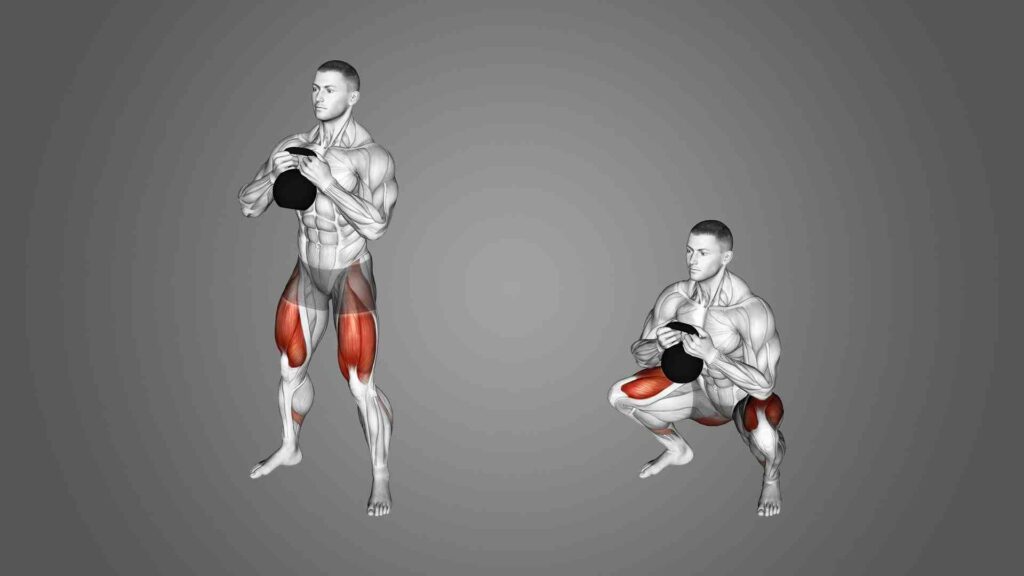
How to Perform: Lower your hips while keeping your chest up, and push through your heels to return to the starting position.
Sets & Reps: Start with 3 sets of 10 reps.
Tips: Engage your core and keep your knees in line with your toes as you squat down.
SHOP FOR THE FOAM ROLLER ON AMAZON
Incorporate these compound leg exercises into your routine to sculpt strong, powerful, and functional legs. Remember to prioritize proper form, progressively increase weights, and allow ample recovery for optimal results.
Proper Execution and Techniques
Executing compound leg exercises with proper form is crucial to maximize results and minimize the risk of injury. Let’s delve into the essential aspects of proper execution, the common mistakes to avoid, and some valuable tips for beginners:
Importance of Proper Form
- Safety: Proper form ensures that you’re working the intended muscles while minimizing strain on joints and ligaments. It reduces the risk of injuries that could set back your progress.
- Effective Muscle Engagement: Correct form allows you to target the right muscle groups, leading to better muscle growth and functional strength development.
- Progressive Overload: Maintaining good form enables you to gradually increase weights over time, promoting muscle adaptation and growth.
Common Mistakes to Avoid
- Knee Overextension: During squats and lunges, avoid letting your knees extend too far forward beyond your toes. This puts undue stress on your knee joints.
- Rounded Back: Maintain a neutral spine during exercises like deadlifts and Romanian deadlifts. Avoid rounding your back, as it can lead to back strain.
- Lifting with Your Back: During deadlifts, use your hips and legs to lift the weight, not just your back. This prevents lower back injuries.
- Excessive Leaning Forward: In exercises like Bulgarian split squats, keep your upper body upright. Leaning forward excessively can compromise balance and form.
- Neglecting Core Activation: Engage your core muscles throughout compound exercises to stabilize your spine and prevent lower back issues.
Tips for Beginners
- Start Light: Focus on mastering proper form before attempting heavier weights. This will prevent injuries and build a strong foundation.
- Use Mirrors: Perform exercises in front of a mirror, if possible, to monitor your form and make necessary adjustments.
- Warm Up: Prior to your leg workout, warm up with dynamic stretches and light cardio to increase blood flow and joint mobility.
- Seek Guidance: If you’re new to compound leg exercises, consider working with a qualified fitness trainer to ensure you’re performing the exercises correctly.
- Controlled Movement: Emphasize controlled, deliberate movements. Rushing through exercises can compromise form and effectiveness.
- Record Yourself: Recording videos of yourself performing the exercises can help you identify areas where your form may need improvement.
- Breathing: Remember to breathe properly throughout the movements. Exhale during the exertion phase (lifting) and inhale during the lowering phase.
- Rest and Recovery: Allow your muscles to recover between workouts. Adequate sleep, hydration, and nutrition play a significant role in muscle growth.
SHOP FOR THE FITNESS TRACKER ON AMAZON
By prioritizing proper form, avoiding common mistakes, and following these tips, you’ll set yourself up for success in your compound leg exercises journey.
FAQs
Q.1 Can compound leg exercises help with fat loss?
Ans. Compound leg exercises are excellent for fat loss. These exercises engage multiple muscle groups, leading to higher energy expenditure and calorie burn during and after your workout. Additionally, as you build more lean muscle mass through compound exercises, your metabolism gets a boost, aiding in long-term fat loss.
Q.2 Are compound exercises suitable for beginners?
Ans. Yes, compound exercises can be suitable for beginners, but it’s important to start with proper form and lighter weights. Mastering the correct technique is crucial to prevent injuries. Begin with bodyweight or light resistance and gradually progress as you gain strength and confidence.
Q.3 How do I prevent injuries while performing compound leg exercises?
Ans. Injury prevention is key when performing compound leg exercises. To stay safe:
- Focus on maintaining proper form throughout the movement.
- Start with a proper warm-up to increase blood flow and flexibility.
- Gradually increase weights as your strength improves.
- Use a spotter or trainer, especially when attempting heavier lifts.
- Listen to your body and avoid pushing through pain or discomfort.
Q.4 Should compound leg exercises be included in every leg workout?
Ans. Yes, compound leg exercises should form the foundation of your leg workout routine. They engage multiple muscle groups and provide a solid base for overall leg strength and development. Including compound exercises in every workout ensures balanced growth and functional strength.
Q.5 Can compound exercises replace isolation exercises for legs?
Ans. While compound exercises are highly effective, isolation exercises have their place too. Compound exercises engage larger muscle groups, but isolation exercises target specific muscles more directly. Incorporating both types of exercises can lead to a well-rounded leg workout, ensuring comprehensive muscle development.
Q.6 How often should I incorporate compound leg exercises into my routine?
Ans. Aim to include compound leg exercises in your routine 2-3 times per week. This frequency allows for adequate recovery while providing enough stimulus for muscle growth and strength development.
Q.7 What is progressive overload, and why is it important for compound leg exercises?
Ans. Progressive overload is the gradual increase in resistance or intensity over time. It’s crucial for muscle growth and strength gains. By progressively increasing the weight, reps, or sets of your compound leg exercises, you challenge your muscles to adapt and grow stronger.
Q.8 Are there any alternatives for individuals with joint issues or mobility limitations?
Ans. If you have joint issues or mobility limitations, consider modified versions of compound exercises or alternative exercises that suit your needs. Consult with a fitness professional or physical therapist to find exercises that are safe and effective for your specific situation.
Q.9 Can I do compound leg exercises at home, or do I need a gym?
Ans. Compound leg exercises can be done both at home and in a gym, depending on the equipment you have available. Many compound exercises, like squats and lunges, can be performed using just your body weight. If you have access to weights or resistance bands, you can further enhance your home workouts.
Q.10 How long does it take to see results from compound leg exercises?
Ans. Results vary from person to person and depend on factors such as genetics, diet, consistency, and intensity of training. However, with consistent effort and proper nutrition, you can expect to start noticing improvements in strength and muscle definition within a few weeks to a couple of months.
Conclusion
In conclusion, compound leg exercises are the cornerstone of a robust and effective leg training regimen. These dynamic movements engage multiple muscle groups, enhance functional strength, and contribute to a well-balanced physique. From squats and deadlifts to lunges and leg presses, the variety of compound leg exercises available ensures that you can tailor your routine to suit your goals and fitness level.
SHOP FOR THE PROTEIN POWDER ON AMAZON
Remember, proper form is crucial to avoid injuries and maximize the benefits of these exercises. Whether you’re a beginner or an experienced lifter, integrating compound leg exercises into your routine can yield significant results in terms of muscle growth, strength gains, and overall fitness.
So, lace up your training shoes, hit the gym with determination, and embrace the power of compound leg exercises to sculpt strong, capable, and impressive legs that support you in every aspect of your active life.

Good day, and welcome to Fitthour. My name is Shubham Vijay, and I am a certified personal trainer and nutrition coach with 6 years of experience in the fitness industry. At Fitthour, we specialize in types of training, such as strength training, cardio, or HIIT, and our mission is to help clients achieve their fitness goals and improve their overall health.

